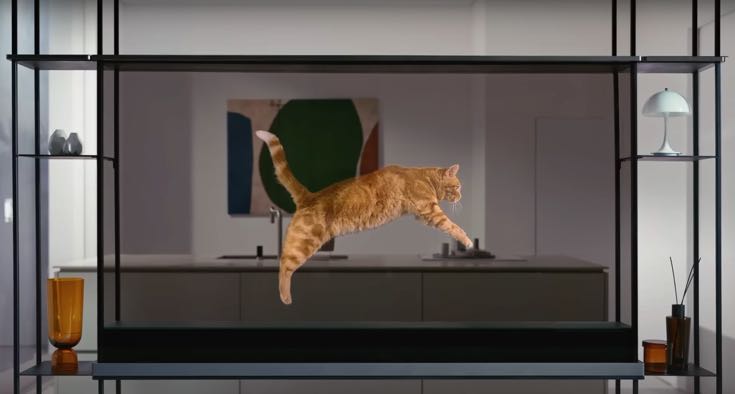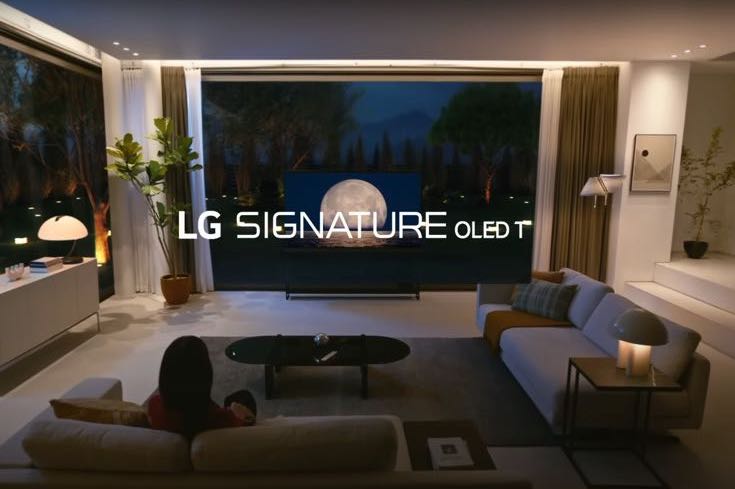When first reading an article about a transparent television, you would be forgiven for checking the date that it was published. There is something very ‘April Fool’s Day’ about a television that is effectively see-through, which is why many people are suspicious that it is just a short-term gimmick that is unlikely to last for any length of time. That being said, there will unquestionably be an audience for such a television, with the only question being whether most people will ever be able to afford it. Trying to understand how it works it almost as mind-boggling as why you woulds want one in the first place, but technology moves on apace.
What We’re Talking About
If you read the opening paragraph and wondered what on earth we’re talking about, you could be forgiven for your confusion. The idea of a transparent television sounds so bizarre that many people might wonder what that even means. In essence, though, it is exactly what it says on the tin, with certain aspects of what you’re watching showing up whilst the rest of the screen is literally see through. Imagine viewing something like some fish swimming around, for example, with the wall behind the screen being entirely visible. It would look, to all intents and purposes like a fish tank, only more vivid and attractive.
The nature of the transparency is such that you’re unlikely to want to watch most things with the television in its transparent mode activated. It is difficult to imagine why you would want your TV to become transparent when you’re watching some football, for example, or you’re sitting down to watch Schindler’s List. The good news is that there is a way of effectively turning the television into a normal one, with the typical black ‘background’ that you’d be used to seeing on your TV, should you prefer to use the television in that manner for any reason. That being said, spending so much on a transparent TV means you probably won’t want to.
How It Works
At the time of writing, the company that is leading the way in the transparent TV market is LG, as is so often the case. They showed off their 77-inch OLED transparent television at the Consumer Electronics Show in Las Vegas in 2024, which they called the Signature OLED T. They described it as the ‘world’s first wireless transparent OLED TV’, with other companies like Xiaomi having released transparent televisions that were 1080p in terms of their resolution. The nature of the TV is such that the company is able to fit the various wires and other things that make up a television in the area around the television rather than behind it.
In order to avoid having to have the likes of HDMI cables plugged into it, which would obviously be a nightmare for a product that you can literally see through, it works off wireless transmission instead. You use LG’s Zero Connect Box to plug in whatever devices you want plugged in, which then communicate their images to the screen and show what you need to see. The screen’s picture quality is powered by an Artificial Intelligence processor, which is also what allows you to move between the screen being transparent and it being opaque. Any content on the transparent screen looks like it is floating in midair.
There are custom widgets that have been integrated into the design, one of which is what LG are calling an ‘info ticker’. This will display the likes of weather information or new alerts, plus it is what you’ll use to bring up things such as the animated wallpapers that are built-in. It is the box that sends the images and sounds to the television that make it so clever, though. It means that customers can put the TV wherever they want, without the need to have electrical outlets plugged into the back of the television for it to work. The images on the OLED TV are 4K in nature, meaning that it can look like a work of art on its own.
Who Would Use One?
Once you’ve got your head around the concept of a transparent television, the next obviously question to answer would be who would actually use one? There are few moments at which most people are watching their TV and desperately wishing they could see behind it. In fact, the way in which most people use their televisions is such that they’re keen for other people not to see behind it and look at the mass of wires and plugs that are hidden back there. With Samsung also entering the market for see-through TVs, though, it is clear that someone in the technology market thinks it’s something we will want in the future.
The see-through television is designed to look akin to a pane of glass when it’s not in use, meaning that people could use it for all sorts of reasons. You could use it as a room divider in your living room, for example, that turns into a fish tank when it isn’t in use. You could put it up against an actual window and use the weather feature to see a screensaver tree turn from one that is blowing in the wind on minute to being covered in snow the next. Imagine a world in which you project a movie you’re watching onto a window but the quality is actually good enough to see the movie and you’ll have a sense of what we’re talking about.
The TV’s see-through nature means that you can have a television in your room whilst still maintaining a sense of openness. For a lot of people, a normal TV tends to dominate and room that it’s in because it’s either showing moving images or else it is like a big black block. The hope of manufacturers is that making a television see-through will increase its relationship with the environment in which it stands. It will become a piece of design work as much as something on which to watch movies and programmes. The see-through nature of it means that people will be able to place a TV in locations that have previously been unimaginable.
Is It Just a Gimmick?

It is hardly surprising that manufacturers are acting as if the see-through TV is a revolutionary thing that will change the way in which we watch the television forever. In reality, though, there are very few people that will be able to find a good reason for wanting a television that will broadcast a picture that isn’t as good as with a normal TV in their lounge. When you consider the fact that LG’s 65-inch wireless 8K OLED TV was on sale for $87,000, it is difficult to imagine one that uses brand new technology and a 60GHz wireless antenna to receive information from a Vox that can be as far as 30 feet away to be on sale for much less than $100,000.
Even if it isn’t just a gimmick, therefore, it isn’t something that normal people will be able to have in their home any time soon. Yes, you can push a button and bring the contrast film up and make the image that you’re looking at much clearer, but then it takes away the point of having a transparent TV in the first place. Not only that, but when the contrast filter is in use, the OLED technology isn’t as good as it is with a conventional OLED television such as LG’s G series of screens. LG introduced Micro Lens Array technology to its OLED lines to see huge improvements in brightness, but that isn’t present in the see-through screen.
There is no question that there will be some people who will love the advent of the see-through TV. The sort of people who always get the latest phone as soon as it’s released or who will go to America in order to buy the Apple Vision Pro before it’s released in the UK will undoubtedly be first in line to order one. Whilst it is likely that we’ll see such TV screens in shops and other locations quite soon, the reality is that it isn’t something that the vast majority of people will even care that much about. If there is ever a point at which the technology becomes as affordable as a normal OLED TV then maybe it will stick around, but it seems unlikely.

